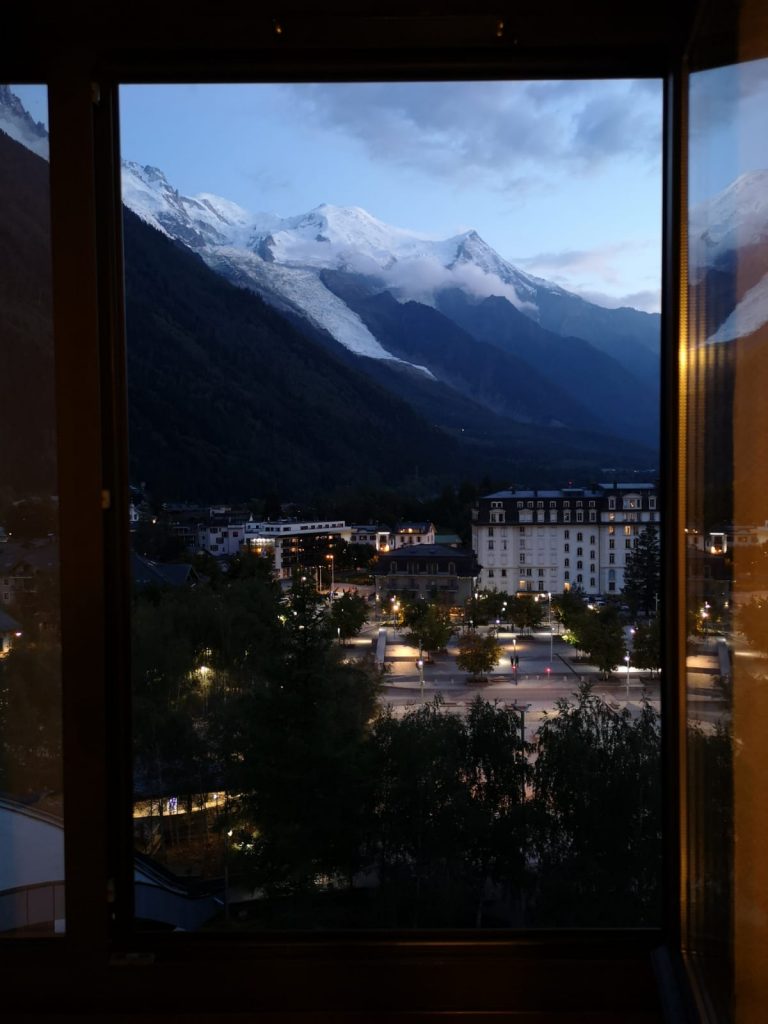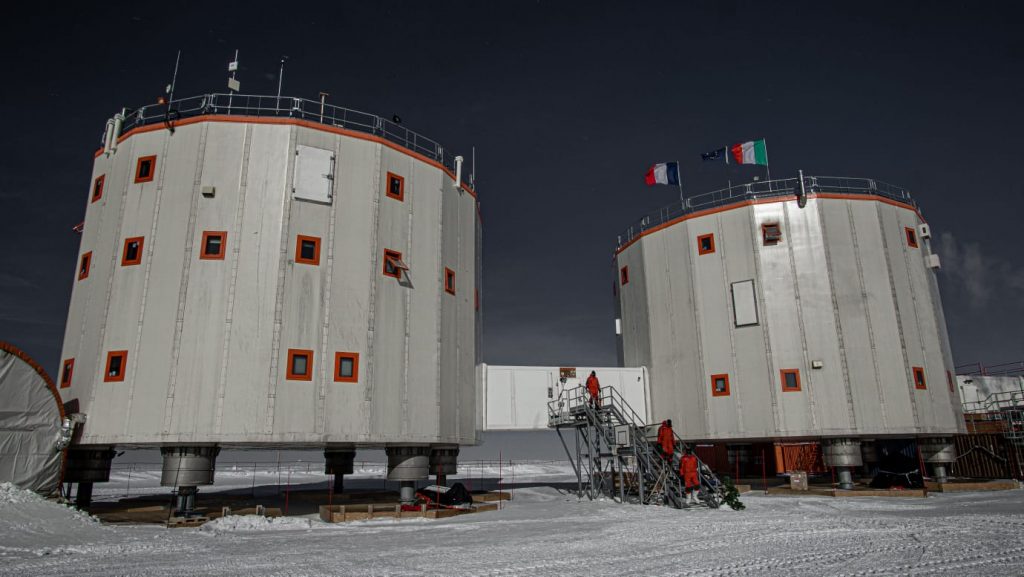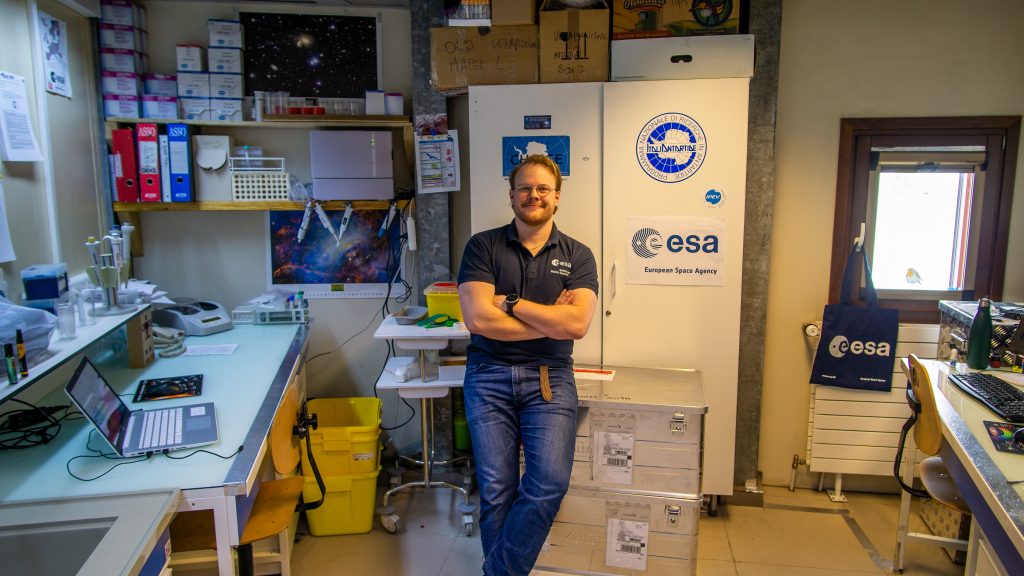Dr. Nick Smith is the ESA-sponsored medical doctor spending 12 months at Concordia research station in Antarctica for the 2020-21 season. He facilitates a number of experiments on the effects of isolation, light deprivation, and extreme temperatures on the human body and mind.
Welcome back everyone. As I am essentially a human spreadsheet and love to be organised, these blogs are going to be mostly in chronological order. Moving on from the pre-departure period in my last attempt, today I’ll describe leaving home through to the first weeks in Antarctica.
At the time of writing I’m 33 years old and have a few valuable experiences under my belt; an adult, some might say. I thought I had seen most of the range of human emotion, but this time was different. On Monday 12th October, incomparable and new, I felt a strange tearing emotion as I walked into Edinburgh Airport. It was a mixture of the acute separation I felt, the anxiety of what would come next and the excitement of the massive adventure towards which I was taking my first physical steps. With the tears of leaving my partner behind for 14 months drying on my cheeks this new feeling oddly enough settled down to a calm determination, that would fuel the perseverance I’ve used so many times before to push through difficult times. The coming weeks and months would certainly prove to be a test of my resolve.

Another throat swab in Paris and a 23-hour flight later via Paris, Rome and Colombo, we arrived in Hobart, Tasmania. The whole group of scientists and technicians travelled together on a chartered flight to ensure we were safe from the public and the public were safe from us. We weren’t allowed to leave the plane once we had boarded (a little taste of the isolation to come). What followed was a third throat swab and two-week quarantine in a hotel. Next, you guessed it, a fourth throat swab. After all results were normal and no-one exhibited any symptoms, we were allowed out within the confines of the hotel grounds. Hobart is a common stop for the French and Italian Polar Institutes – similar to Christchurch in New-Zealand. Geographically it is very favourable. Throughout this whole period, the COVID precautions were extensive and strict. Each quarantine period and swab we underwent had to be clear of symptoms with negative results before we could move on. At the time Antarctica was COVID-free and we were adamant on keeping it that way.
In total we spent around a month in Hobart, never venturing farther than the hotel’s immediate surroundings. Given the cancellation of meetings and courses in Europe, this was the time to slip in some baseline data collection before we took off for Antarctica. It was also an opportunity to meet the crew with whom I would spent the next 13-14 months. I could finally confirm my first impressions; these were 11 people I could spend a dark winter with. After a couple of false starts (after all, c’est l’Antarctique), we were on our way to Antarctica. It felt bizarre going from a Scottish winter to a Tasmanian spring to an Antarctic Summer. We landed on the sea ice at Mario-Zuchelli station in Terra Nova Bay; part of the Italian Polar Institute’s infrastructure. We would wait here until our 3.5 hour, unpressurised flight to Concordia. After a month of isolation and waiting, crossing about a million time zones and a 24 hour wait on the continent itself, we were told it was time to go. We boarded our Bassler and set off for the final destination.
On the flight in, after hours of flying over what seemed like a giant blank sheet of paper with the bizarre experience of being too hot and too cold at the same time, I saw a black speck in the distance. As time moved on the black speck slowly became larger and larger and revealed itself to be the place I would spend the next year of my life. Such vast expanses of absolutely nothing except snow, ice and wind, and bang in the middle of it was my new home. Humbling.
We landed and taxied almost to the front door of the station. What a terribly fascinating place – I can immediately understand how Concordia is considered analogous to living on the moon. Isolation, confinement, an extreme outdoor environment and social and professional monotony reign over everyone; the effects of these on humans are what I’m here to investigate. There isn’t much here that reminds me of life at home in bonnie Scotland; nothing at Concordia station even remotely resembled my definition of normal. I’ve not left earth before, but I feel I’m about as close to it as can be without sitting in a Soyuz for a few hours. Things don’t float here though; disappointing.
A bit about the station. Concordia is the only joint-station in Antarctica, and one of only three inland stations that is staffed year-round. Co-owned by IPEV and PNRA (French and Italian Polar Institutes respectively), it is a place for research into numerous areas; astronomy, glaciology and snow chemistry, atmospheric physics, climate change and climate history, seismology and thanks to ESA, human research into isolation, confinement and extreme environments. The station occupants are roughly split 50/50 – half of the which are scientists and the other half are technicians who keep the station able to support life. Situated on the top of Dome C, at about 3233m above sea level, all who come here are subjected to the low-pressure levels of high altitude and with that comes a lower level of available oxygen. This is exacerbated by our southerly latitude that results in an air pressure that at the equator is equivalent to about 3800m above sea level, and the reduced amount of oxygen that comes with it. All things considered, even though the proportion of oxygen in the air remains constant at 21%, we get about 30-40% less oxygen in each breath compared to sea level. Finally, I have an excuse to be out of breath at the top of the stairs.

On arrival it is hard comprehend just how remote one is. The nearest other humans are 600km away at the Russian Vostok Station, the nearest supplies come from over 1000km away at Dumont D’Urville (a French Polar Institute station). To put it in perspective, sometimes the nearest humans to us are on the International Space Station in near Earth orbit. I wave occasionally but I’m not sure they can see me. Back on earth however, between us and the other stations: only ice. At >1000km from the coast the conditions are so harsh that no life exists here. There are no penguins, no seals, no life at all apart from maybe some bacteria frozen deep in the ice – if my friends are reading this, stop asking for pictures of penguins.
Back to the chronology: after a couple of days of acclimatisation, it was time for a steep learning curve. I had to prepare not only to commence the data collection for six of the seven projects (many for the first time), but also learn to live and work on the station. On top of this, as the search and rescue doctor, I had to learn the specific risk profile of the station and how to use the specialist equipment relevant to specific situations. I then had to teach the rescue team basic life support as well as the rescue techniques used and key considerations of the environment (it’s very cold). All of this while suffering minor altitude sickness. My role as rescue team leader was a daunting one – it could involve organising emergency medical treatment and retrieval from the top of a 45m tower down to the bottom of a human-made 15m deep cave – all while in one of the coldest places on earth. Despite the challenge, with the gratefully received support of my predecessor Stijn, and the enthusiasm of my crew, we were successful in creating a well-trained well-equipped team to deal with whatever may come.
Leaving home, journeying to and arriving in Concordia, because of COVID, was always going to be a challenge. After six years as an aircraft technician in the British Army, followed by 6 years training to become a doctor, then working at the knife-edge through a pandemic, I thought I had seen everything. Lesson learned – I definitely had not. In fact, I’m starting to think I’ve seen and learned enough to know that no-one has. The cultural differences, the environmental differences, the professional differences; all were new and each presented their own trial to overcome. I must admit I found arriving at Concordia and getting started very difficult indeed. As I’ve eluded to I’m no stranger to a challenge, however these challenges required of me the development of new skills as well as dusting off some old ones. I spent a while in the attic of my mind and in the skill garden trying to piece together a good approach to my new job and even though it was very hard, I’m pleased to say I succeeded. Things came together and I made a good start to each of the projects; learning the protocols, acquiring the necessary data and troubleshooting where necessary.

During this difficult time, I found that as usual, perseverance was the key. In time I got a handle on juggling my roles at the station. Summer campaigns are always extremely busy but especially this one. With a crew about half of the normal size and the same amount of work to make sure the station is safe for winter, everyone was rushed off their feet, working long hours sometimes seven days a week. The summer campaign actually made me look forward to the calm of winter.
What an absurdly busy and difficult time, due in large part to the chaos felt the world over by COVID. Nevertheless, I am here with my crew, and we are an effective team.
As a parting thought, recently I have often reflected on one of my core-values: no-one achieves anything alone. In that spirit I would once again I would like to thank Stijn for his support and the comprehensive handover he prepared and gave. This coupled with my partner’s seemingly infinite capacity to put up with a whinging ESA MD were essential to my successes in this period. I am so very grateful.
Next time – spoiler alert – I had to step up to become the crew doctor when ours was evacuated.
Ciao
Nick




Discussion: 7 comments
Hi Nick, reading you from Italy. I will keep reading about this experience. Wishing you all the best.
Superb blog. Thank you Nick for sharing such a incredible experience!
Absolutely fascinating, look forward to reading your next blog.
Extreme enviroment and extremly talented crew, I just checked on Nullscool.net and it reported some -72C in your “neighbourhood”. Thinking of the problem with Covid, have you all been vaccinated or is that a thing that is planned when your watch is nearly over? Some 22 years ago we had -47C up here by the Bothnian bay in Sweden close to Finland. But seeing -60 to -80 really makes our temp seem balmy! How do you keep vehicles warm enough to start, garages with heating or just electric heaters on them, aircooled engines must be easier but not that easy to come by these days, only russians build those.
It is not easy and requires planning and thought. Food is kept outside as a natural freezer, but it can takes weeks to thaw, so the chef has to consider the menu weeks in advance!
Wow.
I would love to hear in detail,some of the adaption challenges you had. What was it like for you without sunlight? What medical issues arose that would not be found in the civilian world…you get the jist..
Compliments for this most enduring feat.
Wow! What an experience! I’m glad I found this blog! Thank you for sharing your adventures with the world. I am going to share this my homeschooled children, for their current people studies, like auto biographies but in more current time? ?